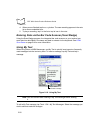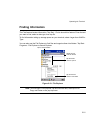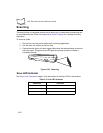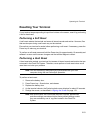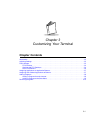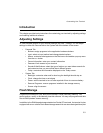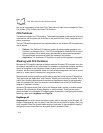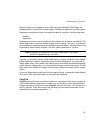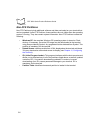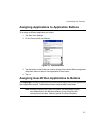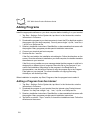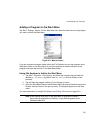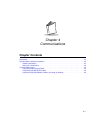
3-4
PDT 8000 Series Product Reference Guide
can not be corrupted by a hard reset. This Flash area is divided into two categories: Flash
File System (FFS) Partitions and Non-FFS Partitions.
FFS Partitions
The terminal includes two FFS partitions. These partitions appear to the terminal as a hard
drive that the OS file system can write files to and read files from. Data is retained even if
power is removed.
The two FFS partitions appear as two separate folders in the Windows CE file system and
are as follows:
• Platform: The Platform FFS partition contains Symbol-supplied programs and
Dynamic Link Libraries (DLLs). This FFS is configured to include DLLs that control
system operation. Since these drivers are required for basic terminal operation,
only experienced users should modify the content of this partition.
• Application: The Application FFS partition is used to store application programs.
Working with FFS Partitions
Because the FFS partitions appear as folders under the Windows CE file system, they can
be written to and read like any other folder. For example, an application program can write
data to a file located in the Application folder just as it would to the Windows folder.
However, the file in the Application folder is in non-volatile storage and is not lost on a hard
reset (e.g., when power is removed for a long period of time).
Standard tools such as ActiveSync can be used to copy files to and from the FFS partitions.
They appear as the “Application” and “Platform” folders to the ActiveSync explorer. This is
useful when installing applications on the terminal. Applications stored in the Application
folder are retained even when the terminal is hard reseted, just as the PDT 8000 Demo
program is retained in memory.
Windows CE expects certain files to be in the Windows folder, residing in volatile storage.
Windows CE maintains the System Registry in volatile storage. There are two device
drivers included in the Windows CE image to assist developers in configuring the terminal
following a hard reset: RegMerge and CopyFile.
RegMerge.dll
Regmerge.dll is a built-in driver that allows registry edits to be made to the Windows CE
Registry. Regmerge.dll runs very early in the boot process and looks for registry files (.reg
files) in certain Flash File System folders during a hard reset. It then merges the registry
changes that are in these files into the system registry located in RAM.



